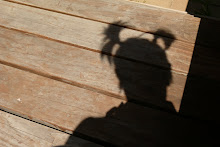 So everyone keeps asking me "Why Padova?" That usually comes after the question "Why Italy?" (yes, a surprisingly large number of people ask me that. But, in my opinion, that answer is pretty obvious. It's amazing, it's beautiful, the people are open and friendly and welcoming, the food is great, the language is musical, it's a country that's not America, "why not!" etc.) So getting back to "Why Padova?" ...In reality, I didn't have much of a choice because it was the only semester program I could choose to do through EAP at Berkeley with the amount of Italian I had studied. The other programs were in Bologna (only for a year) and Rome and Sienna (only if you've taken less than 1 year of Italian). I haven't been to visit Bologna yet but I've heard a lot about it and I don't think I'd like it as much. Rome was beautiful when I went but it's such a big city it feels like New York; which is awesome to visit but I personally would get overwhelmed by it all after a while. Same goes for the other big cities like Florence, Milan, etc.
So everyone keeps asking me "Why Padova?" That usually comes after the question "Why Italy?" (yes, a surprisingly large number of people ask me that. But, in my opinion, that answer is pretty obvious. It's amazing, it's beautiful, the people are open and friendly and welcoming, the food is great, the language is musical, it's a country that's not America, "why not!" etc.) So getting back to "Why Padova?" ...In reality, I didn't have much of a choice because it was the only semester program I could choose to do through EAP at Berkeley with the amount of Italian I had studied. The other programs were in Bologna (only for a year) and Rome and Sienna (only if you've taken less than 1 year of Italian). I haven't been to visit Bologna yet but I've heard a lot about it and I don't think I'd like it as much. Rome was beautiful when I went but it's such a big city it feels like New York; which is awesome to visit but I personally would get overwhelmed by it all after a while. Same goes for the other big cities like Florence, Milan, etc.After spending last night at a house party and then at an Erasmus (European study abroad program) event at a discotechque, and getting asked "Why Padova?" about 10 times, I started to try to think of a funny reason cuz all I had was "Boh, non lo so" (I don't know). Needless to say, I came up with nothing except that maybe I have a secret crush on Giotto... kind of improbable though.
However, riding my bike to class this morning, I thought: I love being able to bike 15 min to get to class. I love heading into the center (centro) to go the the farmers market, bakery, and mom-and-pop cheese and meat shops, every day on my way home to find something amazingly fresh, tasty, and really well priced for lunch (the farmers maket is open every day! except Sundays of course). I like being able to bike or walk anywhere I would want to go in 20 min or less. Like Goldilocks and the Three Bears, Padova is the perfect size for me; not too big to be overwhelming, and not too small to be boring. In addition, there are lots of other awesome things like fun people I've met, being able to play ultimate frisbee, having an interesting class, etc. I think how you feel about a place is based on a number of things: How you like it in general (size, activities, etc.), a little bit of good luck in living location, people you meet, and not having things stolen all of which keep you from getting bad vibes, and also your own actions (getting to know new people, trying new things, being open). I think all these things have fallen into place here in Padova, so I'm pretty excited to be here :)











